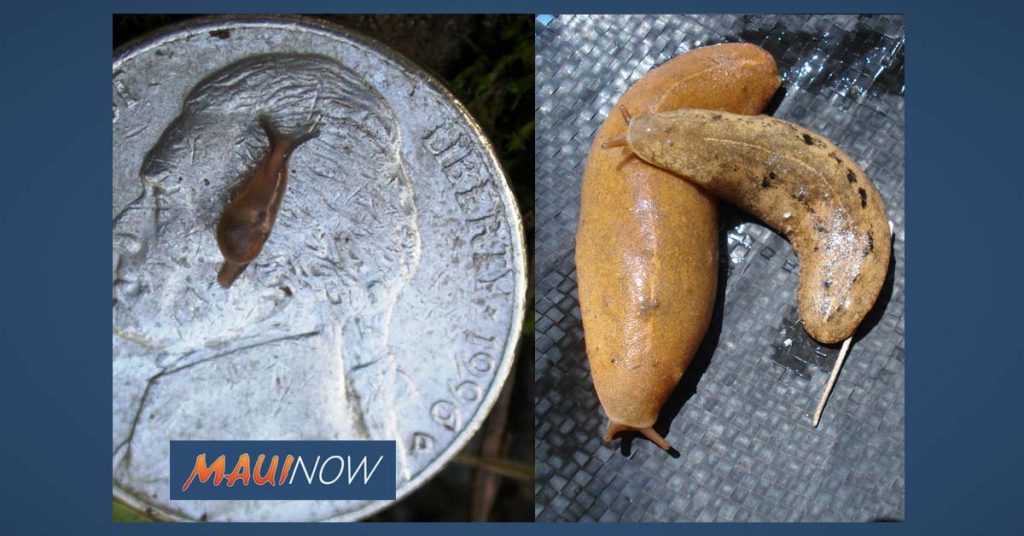Two New Confirmed Cases of Rat Lungworm in Hawai‘i

Rat lungworm photos: Juvenile Parmarion martensi on a nickel (credit: HDOH); Veronicella cubensis (Credit: Rob Cowie, UH Mānoa)
The state Department of Health has confirmed two more cases of rat lungworm disease contracted on Hawai‘i Island.
One case involved an adult visitor who had been vacationing in North Hawai’i last year. The visitor became ill in December 2018 and was not diagnosed until they were hospitalized for their symptoms when they returned to the mainland.
The individual has since recovered and was identified as the seventh person from Hawai‘i Island who tested positive for rat lungworm in 2018, bringing the statewide total to nine confirmed cases last year.
Another case was identified in an adult resident from East Hawai‘i who became ill in January and was hospitalized early this month. It was the first case of rat lungworm disease confirmed in Hawai‘i this year.
Health officials say it is unknown at this time exactly how or where the individuals became infected.
“Our investigators are working diligently to communicate with the patients and learn more about how they may have become infected with rat lungworm disease,” said Health Director Bruce Anderson. “Determining the exact source of infection in any individual is challenging since it requires a deep dive into a person’s food consumption history as well as where they may live, work, travel and recreate. We know that most people get sick by accidentally eating infected slugs and snails. Taking precautions—such as washing all fresh produce before enjoying, and getting rid of slugs and snails around our homes and communities—can go a long way toward preventing infection.”
Rat lungworm or angiostrongyliasis is caused by a parasitic roundworm and can have debilitating effects on an infected person’s brain and spinal cord. In Hawai‘i, most people who are infected, become ill by accidentally ingesting a snail or slug infected with the parasite.
Symptoms vary widely between cases, and the most common ones include severe headaches and neck stiffness. The most serious cases experience neurological problems, severe pain and long-term disability.
DOH provides the following recommendations to prevent rat lungworm disease:
- Control snail, slug, and rat populations around homes, gardens and farms. Get rid of these vectors safely by clearing debris where they might live, and also using traps and baits. Always wear gloves for safety when working outdoors.
- Inspect, wash and store produce in sealed containers, regardless of whether it came from a local retailer, farmer’s market, or backyard garden.
- Wash all fruits and vegetables under clean, running water to remove any tiny slugs or snails. Pay close attention to leafy greens.
For more information about rat lungworm disease and how to prevent its spread, visit:
- DOH website: http://health.hawaii.gov/docd/disease_listing/rat-lungworm-angiostrongyliasis/
- HDOA website: http://hdoa.hawaii.gov/blog/main/rat-lungworm-information/
- CTAHR website: http://manoa.hawaii.edu/ctahr/farmfoodsafety/rat-lungworm/
- CDC website: https://www.cdc.gov/parasites/angiostrongylus/index.html








